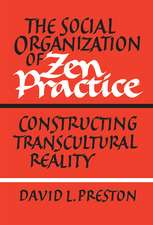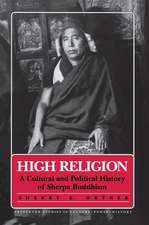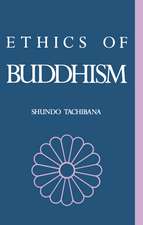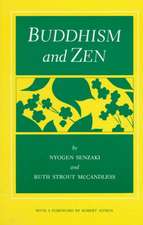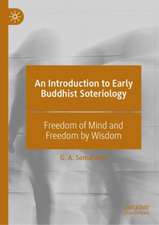The Third Turning of the Wheel: Wisdom of the Samdhinirmocana Sutra
Autor Reb Anderson James William Colemanen Limba Engleză Paperback – 31 mar 2012
Preț: 144.04 lei
Nou
Puncte Express: 216
Preț estimativ în valută:
27.57€ • 28.67$ • 22.76£
27.57€ • 28.67$ • 22.76£
Carte disponibilă
Livrare economică 25 martie-08 aprilie
Livrare express 08-14 martie pentru 23.09 lei
Preluare comenzi: 021 569.72.76
Specificații
ISBN-13: 9781930485310
ISBN-10: 193048531X
Pagini: 226
Dimensiuni: 150 x 226 x 18 mm
Greutate: 0.32 kg
Ediția:Text mare
Editura: Rodmell Press
ISBN-10: 193048531X
Pagini: 226
Dimensiuni: 150 x 226 x 18 mm
Greutate: 0.32 kg
Ediția:Text mare
Editura: Rodmell Press
Notă biografică
Reb Anderson Roshi moved to San Francisco in 1967 to study Zen Buddhism with Shunryu Suzuki Roshi, who ordained him as a priest in 1970. Since then, he has continued to practice at the San Francisco Zen Center, where he served as abbot from 1986 to 1995 and is now a senior dharma teacher. Anderson Roshi lectures and leads retreats around the world, and is the author of Warm Smiles from Cold Mountains: Dharma Talks on Zen Meditation (Rodmell Press, 1999) and Being Upright: Zen Meditation and the Bodhisattva Precepts (Rodmell Press, 2001). He lives with his family and friends at Green Dragon Temple, Green Gulch Farm, near Muir Beach, in Northern California.
James William Coleman is a professor of sociology at the California Polytechnic State University, San Luis Obispo, and author of The New Buddhism: The Western Transformation of an Ancient Tradition (New York: Oxford University Press, 2001).
James William Coleman is a professor of sociology at the California Polytechnic State University, San Luis Obispo, and author of The New Buddhism: The Western Transformation of an Ancient Tradition (New York: Oxford University Press, 2001).
Descriere
In his previous book, Being Upright: Zen Meditation and the Bodhisattva Precepts, Reb Anderson Roshi described how we must become thoroughly grounded in conventional truth through the practice of compassion before we can receive the teachings of the ultimate truth. In The Third Turning of the Wheel, he introduces us to the next stage of our journey by invoking the wisdom of the Samdhinirmocana Sutra.
According to Anderson, the main purpose behind this enigmatic sutra is to reconcile the apparent contradictions between the original teachings of the historical Buddha and the later teachings of Mahayana Buddhism. Anderson reflects on the great metaphysical questions proposed in the Samdhinirmocana Sutra—the nature of ultimate reality, the structure of human consciousness, the characteristics of phenomena, the stages of meditation, and the essential qualities of a buddha—with the clarity of a scholar and the insight of a practitioner.
According to Anderson, the main purpose behind this enigmatic sutra is to reconcile the apparent contradictions between the original teachings of the historical Buddha and the later teachings of Mahayana Buddhism. Anderson reflects on the great metaphysical questions proposed in the Samdhinirmocana Sutra—the nature of ultimate reality, the structure of human consciousness, the characteristics of phenomena, the stages of meditation, and the essential qualities of a buddha—with the clarity of a scholar and the insight of a practitioner.



